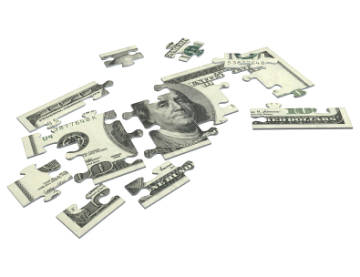Average 2011 Physician Income By Specialty


 “The most powerful force in the universe is compound interest” -- Albert Einstein
“The most powerful force in the universe is compound interest” -- Albert Einstein
I always find other people’s stereotypes about doctors amusing. Here’s one typical encounter that happens every so often:
As I’m placing the last chart in the discharge rack, a nurse unexpectedly asks me “What car are you driving home?”
“What car do you think I drive?” I respond. “I bet he drives a Beemer,” shouted a tech.
“I parked next to a BMW, but I drive an 11-year-old Honda with over 200,000 miles on it,” I say.
“Yeah right. Then what do you do with all that money?”
“After buying my groceries at Sam’s Club, I save it,” I reply, as I wave my still remoteless keys.
I’ve met many physicians who think “save” is a dirty four-letter word. They spend everything and live paycheck-to-paycheck. So let’s explore what some of the few simple principles of saving can do for you.
Over the past 10 years of practicing emergency medicine, I’ve realized one of the most powerful but underrated techniques to achieve financial independence: Making the most of compound interest. Compound interest simply means the interest which accrues on interest.
For example if you have $1,000 invested at an annual interest rate of 10%, then after one year you would have $1,100 ($1,000 original investment and $100 of interest). After the second year you would have $1,210 ($1000 original investment, $200 of interest on the original investment, and $10 of interest on the first year’s interest).
Combining saving with compound interest leads to my three “S’s” of saving:
1. Save early
2. Save often
3. Save more
How effective are these principles of saving? Let’s consider three physicians in different stages of their career: a 30 year old (newbie), a 40 year old (mid-career), and a 50 year old (late career). Let’s assume that each one wants to retire at age 65 with a $2 million investment portfolio and each has a gross annual income of $200,000. Let’s also assume an 8% annual investment return. For this discussion, we will ignore inflation and taxes.
Save Early
For the 30 year old to reach $2 million by age 65, he would need to invest about $11,500 per year, which is less than 6% of his gross income. The 40-year-old physician would need to save $27,000 per year, or about 13% of gross income -- still an obtainable goal. The 50 year old would need to save more than $73,000 per year, or a whopping 36% of his income.
If the 50 year old has two-college aged children and a home mortgage, he may need to delay retirement, cut expenses, underfund college savings, or work more to earn more income (assuming that he stays healthy enough to do so). Looking at it another way, the 50 year old needs to save over six times more money per year than the 30 year old to achieve the same portfolio value at age 65. How many physicians can do that?
Next time, I’ll discuss the other 2 principles of saving.
 In a previous post I discussed some ways you can beat inflation through changes in your workload and expenses.
In a previous post I discussed some ways you can beat inflation through changes in your workload and expenses.At some point, however, you’ll have to make some changes in your investment portfolio.
Real Returns
Instead of working harder or longer, you can generate inflation-beating returns (known as real returns) from your investments. The goal is to preserve an investment portfolio’s purchasing power so that future liabilities, which increase at the rate of inflation, can be adequately met by an equal or greater increase in assets.
Due to the compounding effects of inflation, there is a greater erosion of purchasing power over time. Assuming a 3% inflation rate, your purchasing power declines by over half in 25 years, which is well within an individual’s investment timeframe. With just a slight increase to 4%, it declines by nearly two-thirds. In other words, it would take twice as many dollars in 25 years to purchase the same goods and services as it would today assuming average inflation, and almost three times as many dollars assuming inflation rate is 4%.
Stocks
Stocks historically have provided long-term returns in excess of inflation of about 6%, albeit with high variability. To beat inflation with stocks, make sure you invest in them for a minimum of 10 years since in the short term, stocks have had negative real returns with unanticipated high inflation the majority of the time. For most of the 1970s, and again most recently from 2000 to 2002 and 2008, the real rate of return on U.S. stocks as measured by the Dow Jones Industrial Average was negative, indicating a loss of purchasing power.
On the other hand, in the long-run real-estate stocks beat inflation, as shown by the fact that the Consumer Price Index (CPI) more than doubled from 1980 to 2006, while real estate stocks increased over five fold.
Bonds
Bonds fare worse than stocks with inflation, but still have achieved a long-term real return of about 2%. The interest payments from a bond include the risk assumed for anticipated inflation. With unanticipated high inflation, prices of bonds decline even more than stocks. In fact, for a period of four decades from 1940s to 1970s, the real return on U.S. Treasury bonds was negative. To mitigate the effects of inflation, make sure you buy short-term bonds with maturities less than five years.
Two types of government-issued bonds guarantee inflation protection, I bonds and Treasury Inflation Protected Securities (TIPS). The I bond is a savings bond which pays a fixed interest rate and on top of that adds an inflation rate based upon the CPI, so that it nearly guarantees a return that beats inflation. TIPS are government bonds whose face value periodically increases at the inflation rate. Interest payments also increase based upon the inflation adjusted face value to guarantee a positive real return.
Gold
Gold historically has been seen as a safe haven in times of inflation. As a commodity it is expected to have a return of zero after inflation. One study determined that from 1895 to 1999, the price of gold matched inflation but did not beat it. Over the past two decades, though, gold has lost its glitter. In 1980, gold was selling for more than $800 per ounce, the same price it was trading at almost 25 years later. Even after gold’s recent run-up in price, to match inflation over that time frame, gold today should be selling for more than $2,000 an ounce! By comparison, an investment in U.S. stocks from 1980 to today would have grown over 10 fold.
While there is no perfect inflation hedge, the key is mixing a variety of investments together in order to produce long-term positive real returns, since each responds to inflation differently. Physician pay has not kept up with inflation, resulting in a decline in our purchasing power. Strategies to offset personal inflation include boosting gross income by increasing workload, reducing expenses, or investing in inflation-beating investments. Each strategy has its own unique advantages and disadvantages.
 So while active mutual fund managers don't have skill in generating higher investment returns for you, they do have skill in charging you higher fees and fattening their wallets not yours.
So while active mutual fund managers don't have skill in generating higher investment returns for you, they do have skill in charging you higher fees and fattening their wallets not yours. By Mehul Sheth DO
By Mehul Sheth DO
It’s a look that says “you can make it sound easy, but that’s because you’ve written articles and given talks about it.” This is despite my introduction specifically mentioning that I was naive about money and investing prior to starting medical school. I was incredibly fortunate to grow up in a family that followed the tradition of supporting kids in their education, allowing me to focus on my academics. I did have a number of jobs growing up, including working three part time jobs in college at once, but no one except me relied on that income-unlike now, when my wife and three kids depend on my job to pay off our bills. I was naïve enough about money that I believed the prevailing thought during medical school to not worry about the hundreds of thousands of dollars of debt we were accumulating-we were going to be doctors after all!
This laissez faire attitude gave way to anger. During medical school and residency I couldn’t help but look around at those treating us so nicely with some distrust. Why is a financial advisor so excited to buy me lunch? Why are physician recruiters so interested in helping me find the right job? Why are banks willing to give me a 100% loan based on an employment contract and not actual pay as most of America now has to? The answers to these questions were what made me so mad-that physicians are easy to take advantage of. I have a number of friends in the world of finance and when I talked to them they told me what I already suspected-docs are easy targets. We have that rare combination of high-end, steady income and low interest or knowledge on matters of money. Because of this there are a lot of folks who would like to help make our lives easier by taking a slice of our income. A great parallel is the band TLC from the 90's. Despite being quite succesful, they filed for bankruptcy, partly based on the fact that there were too many people taking too many pieces of that pie.
So I decided to see if personal finance was really that difficult to figure out. The financial advisors had come in talking about 401(k)’s and Roth IRA’s and tax implications, making it sound daunting enough that I didn’t even want to look into it. What I learned was incredibly surprising-with a little bit of interest and about 1 hour a month you can learn everything you need to know about personal finance. I was lucky enough to start during residency and with that little bit of time commitment I have handled all my personal finances without the help of an accountant, financial advisor, or tax-man.
The key is that when you are in residency you don’t have much money coming in. Which also means that there’s not much to do-setting up a Roth IRA is about it. I used those years to learn about the Roth and filing my own taxes-much easier than you think. As my family expanded and my investments diversified, I spent about 2 hours a month on average keeping up with all of it. I now manage our daily finances, 4 retirement accounts, 2 investment properties, 3 kids college funds, a full time job and a number of consulting jobs with income-all without outside help. And the beauty is that you can also.
Where I started is more and more surprising as I get more into personal finance-Suze Orman! As a relatively more sophisticated investor now, I find some of her advice appalling, but she was the perfect fit as I was getting my feet wet. I used her book-Suze Orman’s Financial Guidebook-to walk me through some of the basics of personal finance. It was incredibly simple and with those small pieces of success my confidence built. There are hundreds of great authors on finance-Robert Kiyosaki, Benjamin Graham come to mind-but Suze does an amazing job of giving black and white answers when you are just starting out.
If you find that there are too many cooks in the kitchen, then pick up Suze Orman’s Workbook and take back some of that control.
About: Mehul Sheth DO is a physician executive with Allscripts and career coach. His expertise is at the intersection of medicine, technology and social media, having used Twitter, Facebook, and LinkedIn to effectively engage with a wide variety of nonclinical jobs and opportunities. Dr. Sheth is accessable via his LinkedIn profile and his blog at http://techpedsdoc.wordpress.com
All rights reserved.
LEGAL NOTICE & TERMS OF SERVICE